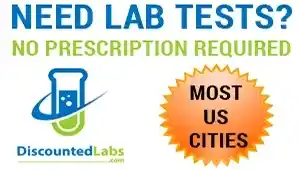Nelson Vergel
Founder, ExcelMale.com
Less than 50 percent would prescribe testosterone to that man with low T.
Clin Endocrinol (Oxf). 2014 Aug 22. doi: 10.1111/cen.12594. [Epub ahead of print]
Clinical Practice Patterns in the Assessment and Management of Low Testosterone in Men: An International Survey of Endocrinologists.
Grossmann M1, Anawalt BD, Wu FC.
Abstract
OBJECTIVE:
To document current practices in the approach to low testosterone in older men. Given that recommendations are based on low-level evidence, we hypothesized that there would be a wide variability in clinical practice patterns.
DESIGN:
Members of all major endocrine and andrological societies were invited to participate in a web-based survey of the diagnostic work-up and management of a hypothetical index case of a 61-year old overweight man presenting with symptoms suggestive of androgen deficiency, without evidence of hypothalamic-pituitary-gonadal (HPT) axis disease.
RESULTS:
943 respondents (91.2% adult endocrinologists) from Northern America (63.7%), Europe (12.7%), Oceania (8.2%), Latin America and Caribbean (7.6%), and the Middle East, Asia, or Africa (7.8%) completed the survey. Response rates among participating societies ranged from 4.1-20.0%. There was a wide variability in clinical practice patterns, especially regarding biochemical diagnosis of androgen deficiency, exclusion of HPT axis pathology, and monitoring for prostate cancer. In a man with suggestive symptoms, 42.4% of participants would offer testosterone treatment below a serum total testosterone of 10.4 nmol/L (300ng/dl). 46.0% of participants were, over the last five years, "less inclined" to prescribe testosterone to men with nonspecific symptoms and borderline testosterone levels, compared to "no change" (29.3%) or "more inclined" (24.7%), p <0.001.
CONCLUSIONS:
This large-scale international survey shows a wide variability in the management of lowered testosterone in older men, with deviations from current clinical practice guidelines, and a temporal trend towards increasing reluctance to prescribe testosterone to men without classical hypogonadism. These findings highlight the need for better evidence to guide clinicians regarding testosterone therapy.
Clin Endocrinol (Oxf). 2014 Aug 22. doi: 10.1111/cen.12594. [Epub ahead of print]
Clinical Practice Patterns in the Assessment and Management of Low Testosterone in Men: An International Survey of Endocrinologists.
Grossmann M1, Anawalt BD, Wu FC.
Abstract
OBJECTIVE:
To document current practices in the approach to low testosterone in older men. Given that recommendations are based on low-level evidence, we hypothesized that there would be a wide variability in clinical practice patterns.
DESIGN:
Members of all major endocrine and andrological societies were invited to participate in a web-based survey of the diagnostic work-up and management of a hypothetical index case of a 61-year old overweight man presenting with symptoms suggestive of androgen deficiency, without evidence of hypothalamic-pituitary-gonadal (HPT) axis disease.
RESULTS:
943 respondents (91.2% adult endocrinologists) from Northern America (63.7%), Europe (12.7%), Oceania (8.2%), Latin America and Caribbean (7.6%), and the Middle East, Asia, or Africa (7.8%) completed the survey. Response rates among participating societies ranged from 4.1-20.0%. There was a wide variability in clinical practice patterns, especially regarding biochemical diagnosis of androgen deficiency, exclusion of HPT axis pathology, and monitoring for prostate cancer. In a man with suggestive symptoms, 42.4% of participants would offer testosterone treatment below a serum total testosterone of 10.4 nmol/L (300ng/dl). 46.0% of participants were, over the last five years, "less inclined" to prescribe testosterone to men with nonspecific symptoms and borderline testosterone levels, compared to "no change" (29.3%) or "more inclined" (24.7%), p <0.001.
CONCLUSIONS:
This large-scale international survey shows a wide variability in the management of lowered testosterone in older men, with deviations from current clinical practice guidelines, and a temporal trend towards increasing reluctance to prescribe testosterone to men without classical hypogonadism. These findings highlight the need for better evidence to guide clinicians regarding testosterone therapy.












